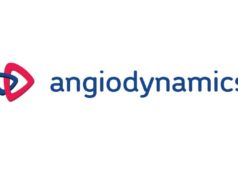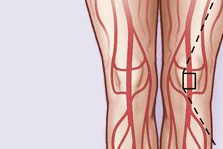Christopher Owens, associate professor of Surgery in the Division of Vascular and Endovascular Surgery at the University of California, San Francisco (UCSF), USA, has presented 13-month data from the DANCE trial during a late-breaking scientific session at the Vascular Interventional Advances (VIVA) Annual Conference 2016 (18–22 September, Las Vegas, USA). DANCE is a prospective, multicentre, single-arm study designed to assess the clinical performance of the localised delivery of a generic steroid, dexamethasone, to the tissues around arteries that have been injured during endovascular interventions, using Mercator MedSystems’ proprietary Bullfrog micro-infusion device.
Thirteen-month results from 281 patients that received the local dexamethasone therapy were presented, separated into two treatment populations: the complete data set for 157 patients undergoing atherectomy as their primary therapy; and interim data for 124 patients undergoing angioplasty as the primary therapy. For the atherectomy group, the primary safety endpoint revealed no post-operative death and 2.4% major adverse limb events, and the primary efficacy endpoint of primary patency was 83.8% at 12 months and 80.2% at 13 months. Primary patency was defined as the lack of target lesion revascularisation (TLR) or narrowing detected by a duplex ultrasound peak systolic velocity ratio (PSVR) greater than 2.4. Freedom from target lesion revascularisation was 89.7% at 12 months and 88.8% at 13 months in the atherectomy group.
According to Owens, “The adventitial drug delivery of dexamethasone, or ADD-DEX, procedure using the Bullfrog micro-infusion device in the DANCE trial has produced promising patency, a very low target lesion revascularisation, and an exemplary safety and device performance record. These data, in my opinion, warrant a paradigm shift toward an anti-inflammatory and pro-resolution strategy for restenosis. The message is clear and simple: an inflammatory process, like what we know we create when we open an artery, requires an anti-inflammatory remedy.”
The data presented by Owens compares favourably to published data on drug-coated balloons, which are expected to be used in 22% of peripheral cases in 2017, according to a survey conducted by RBC Capital Markets. “What we have accomplished with this study is dramatically different from prior drug delivery in the periphery,” noted Owens. “Until now, drug-coated balloons have incorporated drugs that were designed to fight cancer. We are now showing that if we control the potent local inflammation created when we open the vessel by atherectomy or angioplasty, we can see a similar result in a more challenging cohort of patients.”
Mercator chief science and technology officer, Kirk Seward noted, “The use of a microneedle to pinpoint local drug delivery has many advantages over current drug delivery technology. It affords the physician an opportunity to add X-ray-opaque contrast dye and create a visualisation of the agent’s delivery and the ability to diagnose successful local drug administration. Micro-infusion also allows the physician to deliver varying amounts of drug through one catheter rather than a fixed amount based on the coating dimensions associated with a balloon or stent. Achieving these results with a straightforward, off-the-shelf, low-cost steroid gives us great enthusiasm for what might be possible with other agents. We are also encouraged with the LIMBO studies currently underway, two below-the-knee clinical trials that are using the Bullfrog micro-infusion device to deliver the same drug for patency improvement in critical limb ischaemia patients.”













